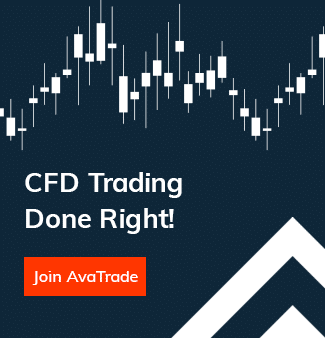
Bonds & Treasuries
Friedberg Direct offers a focused range of US, European and Asian government bonds (also known as treasuries or securities) to trade as CFDs on Meta Trader 4.
With competitive spreads and leverage, there’s no better place to start trading bonds and treasuries than with one of the best forex brokers.
- Japanese & European government bonds
- Low spreads – starting at $0.03 over market
- Availability of Leverage
- Go long (buy) or short (sell) – trade the market your way
Start trading government bonds with Friedberg Direct and enjoy the benefits of trading with a regulated Canadian broker!
What are Treasuries?
Government treasuries – bonds issued by national governments – are considered among the safest long-term investments. When an investor purchases a government bond they are, in effect, lending money to the government for a set number of years. In return they receive interest payments on the amount of the loan. The face value of the bond does not change.
Bonds do not have to be held until they mature. There is a thriving secondary market for government bonds. There are a number of factors to consider when calculating the likely future value of a government bond, including political stability, the value of its currency and the risk of inflation.
What Are the Differences Between Stocks and Bonds?
Stocks, or shares that you can buy, represent partial ownership in a public corporation. These are the companies that you see being traded on the major global exchanges, such as the NYSE, LSE, and many others. Bonds, on the other hand, are a form of debt in which the issuer, typically a government or corporation, promises to pay the principal amount at a specific date in the future.
Stocks can pay dividends to the shareholders, but only if the corporation declares a dividend. This is common, generally, with more mature companies, such as Coca-Cola, Walmart, or Vodafone. Dividends are a distribution of a corporation’s profits to the shareholders, the true owners of the company. Each time dividends are paid out; the amounts will vary as a result of changing profits and earnings per share. In contrast, bonds pay interest to the bondholders. While there are a lot of variations, as a general rule, the contract requires that a fixed interest payment be made every six months, with the principal paid out at expiration.
While every corporation has common stock, some will also offer bonds. Some corporations will also issue preferred stock in addition to its common stock. However, many corporations do not issue bonds, and typically, will only do so when there is a need for capital injection.
The stocks and bonds issued by the largest corporations are often traded on stock and bond exchanges, which are easily accessible to global investors and larger institutions. The stocks and bonds of smaller corporations, however, are most often held by investors in the private markets.
How Do Bonds Work?
Bonds can be thought of as loans. Just as we sometimes need to borrow money to make a large purchase, such as a home or car, governments and corporations will sometimes need to borrow money to finance existing expenses, for construction, or for further expansion.
Sometimes, the amount of capital required far outreaches the ability of banks to accommodate this need. This is where the bond markets come into play. In the bond market, participants can issue new debt, which is known as the primary market, or they can sell and buy debt securities, which is known as the secondary market. This is usually in the form of bonds, but it may include bills, notes, and so on.
When a bond is issued, the issuer promises to pay the bondholder interest payments on the amount of the loan, for the life of the loan. This is typically done in six-month increments but can be slightly different for a few bond types. The payment is referred to as the interest, or sometimes the coupon. The rates are typically higher for the longer-term bonds, as investors are forced to wait. Eventually, the bond matures, and the issuer then closes out the contract by paying back the principal. This is agreed upon upfront, for example, in the form of a ten-year bond.
A vital part of the bond market is the government bond market. The reason for this is because of its liquidity and size. Government bonds are often used to compare other bonds in order to measure credit risk. As a result of the inverse relationship between interest rates or yields and bond valuation, the bond market is often used in order to indicate changes in interest rates. There are some interesting variations of bonds as well. There are convertible bonds, which contain a provision that allows the bondholder to convert the bond into shares of the issuing corporation if they choose. Meanwhile, callable bonds have all of the characteristics of a normal bond, but also have a call option built into the contract. This helps to protect the investors’ finances.
How Does the Bond Market Work?
When companies or other entities need to raise money for a variety of reasons, such as refinancing existing debts, maintaining ongoing operations or financing new projects, instead of obtaining a loan from the bank, they may issue bonds directly to investors. The issuer of the bond, or the indebted entity, will issue a bond that contractually states the interest rate that will be paid and the time at which the loaned funds must be returned. This is the maturity date of the bond. Meanwhile, the interest rate, which is often referred to as the coupon payment or rate, is the return that bondholders earn for loaning their funds to the issuer.
The bond markets are an open market like many others. You can enter the markets looking to buy a bond in a corporation or government, and either invest long-term, meaning holding onto the bond; or you could speculate, meaning trading for quick profits.
However, in the bond markets, bond prices work a bit differently. The interest attached to the price of a bond is inversely correlated. This means that the higher the price, the lower the interest rate, as the demand is also higher. The issuer doesn’t need to offer as much incentive to borrow money. Some of the biggest movers in the bond markets include governments, banks, government agencies, such as Fannie Mae (Federal National Mortgage Association) in the US, and others. The ironic thing is that many of the biggest issuers are also some of the largest purchasers. For example, the Bank of Japan will buy US Treasuries issued by the United States.
The bond markets most obvious major player is the ten year note in the US, which many of the consumer interest rates are tied directly to. For example, the credit card markets are typically referred to as ‘prime plus X%’. If people are buying these types of bonds, such as US Treasuries, it is often considered to be a ‘risk averse’ move. In short, if you are interested in trading bonds, Friedberg Direct offers an all-inclusive trading environment with all the tools and services required to trade bond CFDs effectively.
Trading Bond CFDs
Friedberg Direct allows you to speculate on the shifting value of common government bond futures, such as the Euro-Bund, through CFD trading.
A CFD (contract-for-difference) is a type of derivative that allows you to speculate on the price of an underlying asset – in this case a government bond future contract – without actually owning the asset itself.
The advantage of CFD trading is that you can trade long (buy) or short (sell) easily, trade with leverage in order to take a bigger position, all from a common online trading platform such as MetaTrader 4.
Friedberg Direct currently offers the following treasuries:
- Euro-Bund
- Japan Government Bond
Start trading government bonds with Friedberg Direct and enjoy the benefits of trading with a regulated Canadian broker!
Main Bonds trading FAQ
- How are bonds different from stocks?
Stocks and bonds are quite different in the financial world since stocks represent a partial ownership of a company, while bonds represent debt owed by a company to the bond holder. In some respects they do seem similar however. Both are used to raise capital. And both can give investors regular income since bonds pay out the interest payments to the holder, while stocks often pay dividends. Of the two stocks are far more common in the open market, and typically only the largest blue chip companies will have bonds that trade on public exchanges.
- Which bonds are best to trade?
There are a number of different types of bonds, from corporate bonds issued by individual companies, to municipal bonds that are typically issued to pay for a specific project, such as improvements to schools, to government Treasuries which fund the Federal government. At their heart they are all the same, they are all debt instruments. So which are best to trade? Rather than considering the source of the bond it is helpful to consider the ranking instead. There are three major bond ranking agencies, Standard & Poor’s, Moody’s, and Fitch. They all use a similar ranking method and the higher a bond is ranked, the safer it is. However lower ranked bonds are often better for trading as investors can be willing to pay more as they chase the yield.
- What are some bond trading strategies?
There are a number of bond trading strategies with names like swaps, barbells, and ladders. Each has a specific function, for example the swap is often used to lower an investor’s tax liability, or to simply improve the yield being collected. A ladder is used to smooth out interest payments over a period of time. A barbell uses primarily very short and very long maturity bonds for diversification and flexibility. One profitable strategy is called rolling down the yield curve. As long as bonds with short maturities yield less than those with long maturities it is profitable to buy the long dated bonds and then sell them after 2-3 years, collecting a profit and reinvesting the proceeds in new long term bonds.
These FAQs, comments/analysis do not take into consideration your individual personal circumstances and trading objectives. Therefore, they should not be considered as a personal recommendation or investment advice. They are intended for educational purposes only. Past performance is not indicative of future results. There is no guarantee that the contents or instructions will result in profits or not result in losses.







